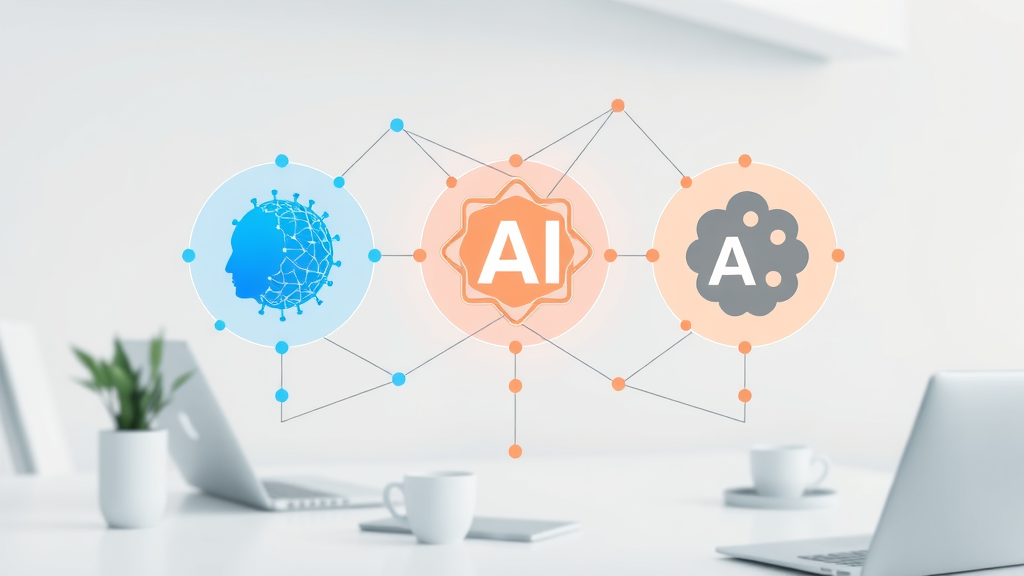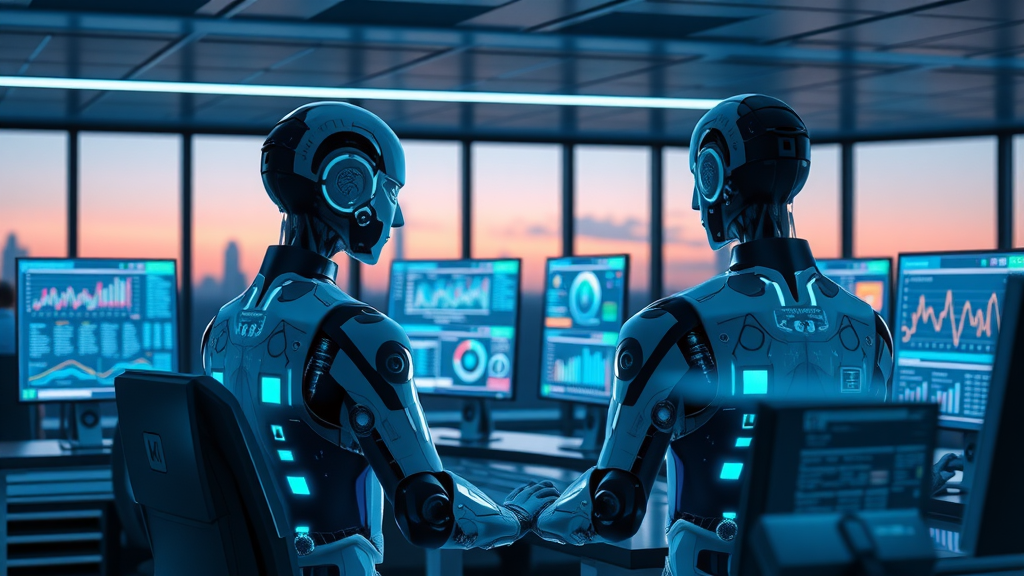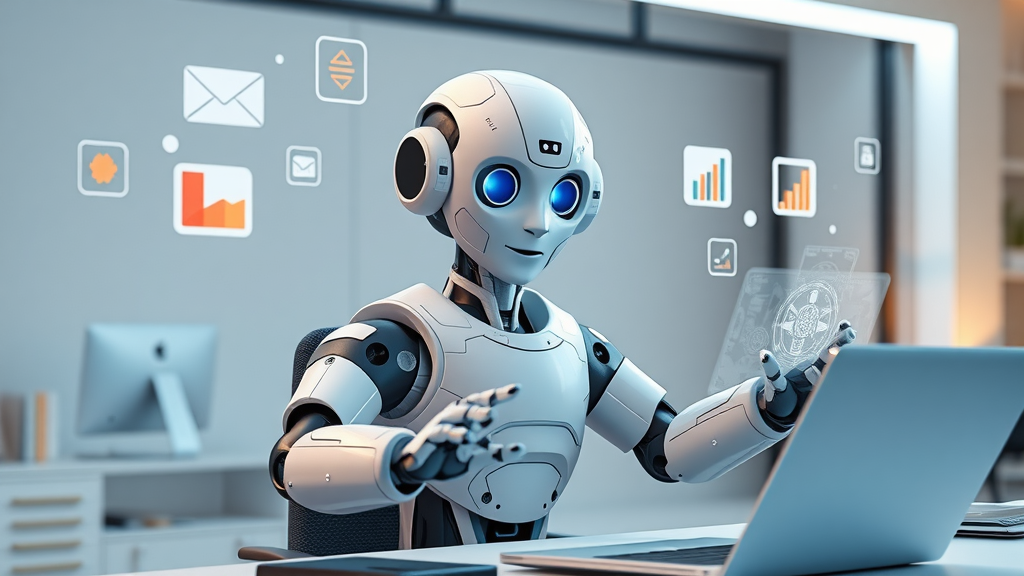Did you know that over 30% of small businesses now use some form of agentic AI to automate key functions—yet most don’t fully grasp its capabilities? This isn’t just another AI trend: agentic AI is quietly transforming the way local businesses operate, market, and serve their customers. If your idea of artificial intelligence is simply chatbots or auto-responses, prepare to discover how much more agentic AI can do for your business’s future.

A Startling Look: The Surprising Impact of Agentic AI on Local Businesses
The rise of agentic AI is reshaping the small business landscape at a pace that's catching many owners off guard. Independent retailers, family-run cafes, and neighborhood service providers are discovering that these cutting-edge AI agents do much more than just crunch numbers—they proactively make decisions, anticipate needs, and automate complex workflows with minimal human intervention. The impact is more than just operational; it’s strategic. Agentic AI is now a key player in helping local brands stay competitive amidst rapid digitalization. Business processes that once required teams of people—such as customer service, marketing outreach, and even supply chain coordination—can now be streamlined with advanced AI systems working in the background. This not only saves time but also uncovers new revenue opportunities by personalizing experiences at scale.
Local marketers are especially finding value as agentic AI adapts campaigns in real-time, responds to changes in consumer behavior, and handles customer requests—sometimes before a human staff member is even aware of them. What’s most surprising is how quickly agentic AI is gaining traction: adoption among SMEs (small and medium-sized enterprises) has reached unprecedented levels. This surge isn’t just about following trends. It’s about survival. Those who harness agentic AI’s unique capabilities are already setting themselves apart in a crowded, competitive environment—and those who don’t risk falling behind.
As you explore the practical applications of agentic AI, it's worth noting how these systems are already streamlining business operations, from automating reservations to managing inventory. For a closer look at real-world examples and the measurable benefits local businesses are experiencing, see the impact of AI-driven automation in business environments.
Statistical Insights: Agentic AI’s Rapid Adoption in SMEs
"Over 30% of small businesses now use some form of agentic AI to automate key functions—yet most don’t fully grasp its capabilities."
The momentum behind agentic AI use in SMEs is remarkable. According to recent surveys, the growth curve has steepened over just two years, with agentic AI moving from experimental pilot projects into mission-critical business processes. What’s driving this surge? It’s the proven ROI and practical impact: local businesses report time savings, reduced error rates, and increased customer satisfaction. The truth is, while terms like "AI model" or "ai system" might sound technical, their day-to-day impact is as simple as faster waivers signed, orders placed, or targeted marketing emails sent out exactly when customers are most likely to engage. These are more than incremental improvements—agentic AI agents are empowering local entrepreneurs to scale operations in ways that were once the domain of much larger, resource-rich corporations.
What You'll Learn: Unlocking the Power of Agentic AI for Business Owners
- Understand agentic AI and its unique features
- Differentiate between agentic AI, generative AI, and traditional AI systems
- Identify agentic AI use cases in marketing, customer service, and supply chain
- Gain expert insights on leveraging agentic AI systems for local business growth

Defining Agentic AI: Beyond Generative AI and Traditional AI Agents
Many people think of AI as a broad category that includes everything from voice assistants to recommendation engines, but agentic AI is something entirely different. While traditional AI systems often rely on fixed rules or predefined responses, agentic AI agents use advanced machine learning and complex algorithms to act autonomously, make proactive decisions, and complete tasks with minimal human oversight. These agents are not just waiting for commands; they’re constantly learning, adapting, and taking initiative to solve real-world business problems. For local businesses, understanding this distinction means uncovering new applications for AI that go well beyond what many competitors have explored.
With the rise of generative AI models (like ChatGPT), the lines can get blurry. Generative AI focuses on creating text, images, or content in response to user prompts. Agentic AI, on the other hand, is all about execution and autonomy—think of an ai agent that not only writes engaging marketing copy but also sends emails, segments contacts, and follows up with customers. This level of automation and dynamism can transform marketing, streamline customer service, and bring new predictive power to supply chain management—all without needing constant input from business owners or staff.
What does agentic AI mean?
Agentic AI refers to AI systems that act as autonomous agents capable of pursuing goals, making decisions, and taking actions on behalf of a business or user. Unlike rule-bound or generative models, these agentic AI systems manage workflows, optimize processes, and coordinate resources across a business’s operations. Their “agency” means they can operate independently—anticipating needs, proactively responding to changing conditions, and learning continuously. With such abilities, agentic ai is increasingly used by local marketers to boost efficiency and enhance customer experiences in ways that traditional AI simply can’t.
Agentic AI vs. Generative AI: Understanding the Key Differences
Both agentic AI and generative AI rely on advanced language models or machine learning algorithms; however, their core purposes diverge. Generative AI excels at creating content or responding to specific user prompts. Agentic AI goes far beyond, acting as a proactive agent that can optimize marketing strategies, automate follow-up sequences, handle customer service, and drive business process improvements autonomously. For instance, generative AI might write the perfect subject line for an email, but an agentic AI system can decide who receives that email, when it’s sent, and how to follow up—all while adapting its approach as new data arrives.
| Feature | Agentic AI | Generative AI | Traditional AI Systems |
|---|---|---|---|
| Autonomy | High | Variable | Low |
| Decision-Making | Proactive | Reactive | Rule-based |
| Use Cases | Wide (marketing, customer service) | Content creation | Repetitive tasks |

Practical Applications: Agentic AI Use Cases for Local Marketers
The power of agentic AI truly shines in real-world scenarios important to local marketing. Rather than generic automation, agentic AI adapts to a business’s unique needs, creating smart solutions for customers, staff, and vendors. From delivering tailored communications to streamlining backend logistics, these AI agents can deliver a substantial edge in day-to-day operations and customer engagement. Here’s how local marketers are using agentic AI right now to improve processes and build lasting relationships with their customers.
By integrating agentic AI agents into daily workflows, businesses can automate responses, make decisions instantly, and ensure consistency at all touchpoints—no matter the time of day. Marketers can experiment with personalisation, A/B testing campaigns, and rolling out offers based on real-time data, all without hiring additional staff. That’s why the best use cases for agentic AI focus on automating work that matters, freeing people to focus on tasks that really need a human touch.
Agentic AI in Customer Service: Enhancing Human-Like Interactions
In customer service, agentic AI delivers human-like interactions by understanding requests in natural language and resolving issues proactively. Unlike static chatbots, today’s agentic ai systems can track ongoing conversations, remember context, and escalate to a live agent only when necessary. Automated workflows take care of routine requests such as support tickets, meaning customers get immediate attention—day or night—while human staff can focus on complex or sensitive queries. This leads to higher satisfaction rates and return customers.
- Automated support tickets
- Proactive customer engagement
- 24/7 support agents
Businesses using agentic AI for customer service report not just faster case resolution, but also improved customer loyalty. By freeing up time for team members and minimizing human intervention, these systems ensure consistency, learn from each interaction, and make adjustments to processes as demands shift. For local service providers, this means being able to compete with large enterprises in responsiveness, without the overhead of large support teams.

AI Agent-Driven Campaigns: Personalisation and Targeted Marketing
Local businesses have always thrived on personal relationships, but personalisation at scale was once impossible for small teams. Agentic AI turns this on its head by driving highly targeted, dynamic marketing campaigns that shift automatically as customer interests evolve. For example, dynamic email marketing lets AI agents analyse interactions and tailor messaging in real-time—creating a "just for you" customer experience usually delivered only by the biggest brands. Similarly, AI-driven customer segmentation can help target promotions and product recommendations before competitors even notice.
- Dynamic email marketing
- Real-time customer segmentation
Businesses report that these agentic AI features increase campaign conversion rates and deepen customer engagement, as the system sends the right message at exactly the right time. The ability for an AI agent to adapt without human oversight saves hours weekly, letting local marketers focus on creative strategy and relationship-building rather than simply keeping up with ever-increasing data.
Optimising Supply Chains with Agentic AI Systems
Beyond marketing and service, agentic AI plays a critical role in supply chain management. Inventory prediction and automated restocking ensure shelves are always stocked without over-ordering, while supplier negotiation bots streamline vendor communications. By continuously learning from both market data and internal trends, agentic AI helps local businesses cut costs, avoid shortages, and improve delivery reliability.
- Inventory prediction and restocking
- Supplier negotiations
These supply chain advances mean fewer manual errors, better vendor relationships, and more robust business operations. As a result, agentic ai becomes not just a software tool—but a key ally in building business resilience, whatever the market throws your way.
The Technology Behind Agentic AI Systems

Large Language Models & Machine Learning in Agentic AI
The brains behind agentic AI systems lie in large language models and state-of-the-art machine learning techniques. These language models, like GPT-4 or similar frameworks, give AI agents the ability to understand natural language, extract key information, and generate creative solutions for business challenges. Reinforcement learning allows the agents to “learn by doing”—improving performance over time through feedback and outcomes. Together, these technologies enable complex, goal-driven decision-making that’s vital for running local businesses efficiently.
A key advantage of modern agentic AI agents is their flexibility: rather than working from a fixed script, the system adapts to business rules, customer feedback, and even new products on the fly. This mix of language processing and autonomous action transforms marketing, customer service, and back-office operations, putting advanced AI capabilities in the hands of local business owners for the first time.
Agentic AI System Architecture: How It Works
Modern agentic ai systems are built as multi-layered architectures, where each AI agent has a defined role within a business process. At the core sits the main AI decision engine, surrounded by specialty agents for tasks like data intake, communication, and process automation. Data flows from real-world sources—customer interactions, purchase patterns, supplier updates—directly into the system, where it’s analyzed and acted upon in seconds. The result? A setup that optimizes operations with minimal lag and maximum adaptability.
These systems constantly monitor metrics, adjust workflows, and take live actions—automatically relaying updates to staff and flagging only exceptions needing human attention. Transparent dashboards allow business owners to track performance, set new goals, and ensure compliance, all while the agentic AI continues to handle routine and emergent tasks in the background.
From AI Agents to Full Agentic AI: The Evolution of AI Use
Historically, artificial intelligence systems were limited to rule-based automation: think inventory alerts or basic customer service bots. Today’s agentic AI, however, acts with full agency—launching marketing campaigns, repricing products, or renegotiating vendor contracts as business needs change. This journey from static “if-this-then-that” logic to dynamic self-directed agents has been powered by the explosion in computing power, improved natural language processing, and momentum from successful AI use cases in large organizations.
Now, these advances are accessible to local businesses of every size. AI use has moved from a speculative investment to an operational necessity, particularly in industries where adaptability, responsiveness, and cost efficiency spell the difference between success and stagnation.
Agentic AI for Software Development and Automation
Modern software development is being transformed by agentic AI, which automates repetitive coding tasks, manages QA cycles, and coordinates project workflows. Where old-fashioned AI models simply flagged issues or generated boilerplate code, agentic AI agents now make decisions, rewrite processes in response to bugs, and automatically adapt to feature changes.
This shift is empowering local software firms—and even non-technical businesses—to eliminate countless hours of manual work, shorten project timelines, and deliver products that are better aligned with customer needs. Automation isn’t just about cost-cutting: it’s about unlocking new business potential, driving innovation, and remaining nimble in dynamic marketplaces.
Automating Workflows: Real Businesses Succeeding with Agentic AI
"We've reduced manual data entry by 70% by integrating agentic AI agents into our invoicing process." — Local Retailer
These first-hand case studies reveal that automating business processes with agentic AI systems leads to measurable improvements—fewer errors, faster turnaround, and happier customers. Whether it’s scheduling appointments, sending reminders, or optimizing inventory, agentic AI continually proves its worth by reducing employee workload and supercharging operational speed.
Case Study Table: Agentic AI Use Cases in Local Businesses
| Business Type | Agentic AI Use Case | Benefit |
|---|---|---|
| Restaurant | Automated reservations and supply orders | Greater efficiency |
| Retail | AI-powered customer chat and restocking | Improved service, less overhead |
| Professional Services | Dynamic appointment scheduling | Time savings |

What Makes Agentic AI Unique?
While other AI models perform well when given clear instructions, agentic AI systems distinguish themselves by their power to make decisions, learn continuously from interactions, and act in the real world with minimal human input. This is a paradigm shift for local businesses used to constant oversight—freeing up time, reducing risk of manual error, and introducing a layer of adaptability not seen in previous AI waves.
Their uniqueness lies in how seamlessly they integrate into daily operations. With goal-oriented task completion and ongoing optimization, agentic ai systems create consistent value, whether in marketing campaigns, logistics, or customer service. It's AI not just "thinking," but truly "doing."
Is ChatGPT an agentic AI?
While ChatGPT is a powerful generative AI tool, it is not inherently agentic. ChatGPT creates content and responds to prompts, but requires direct instruction each time. An agentic AI agent would take this a step further—using such text-generation skills as part of a larger process, autonomously initiating tasks, making decisions, and learning from real-world outcomes. For a solution to be "agentic," it must have autonomy, real-world action-taking, and the ability to pursue ongoing goals without prompting at every step.
Key Features of Agentic AI Agents
- Continuous learning
- Real-world action-taking
- Goal-oriented task completion
These three features set agentic AI apart from basic automation or static AI agents. By learning from every interaction and acting on that knowledge, agentic AI brings meaningful change to business process management and customer engagement—all while requiring far less human oversight than earlier AI models.

Agentic AI Systems vs. Traditional AI Systems: A Comparative Guide
| Metric | Agentic AI Systems | Traditional AI Systems |
|---|---|---|
| Autonomy | High | Low |
| Personalisation | Advanced | Minimal |
| Adaptability | Strong | Fixed |
The Role of Data in Agentic AI Success
Data is the fuel that powers agentic AI systems. The more accurate, timely, and comprehensive the data fed into an AI agent, the more precise its insights and actions become. For local business owners, this means that capturing customer feedback, purchase trends, and supplier updates isn’t just record-keeping—it’s strategic. Agentic AI “learns” from these data points, adapting campaigns, refining support workflows, and predicting supply chain needs all in real time.
To fully realise the benefits of agentic AI, businesses must prioritize data quality, privacy, and integration. A system that draws from old or incomplete information won’t deliver its promised potential, but one with rich, up-to-date inputs will continue to learn and optimize alongside your business.
Integrating Agentic AI: Steps for Local Business Owners
- Identify business processes ripe for automation
- Select AI agent platforms catering to SMEs
- Plan test cases for marketing and customer service applications
- Train team members on agentic ai use
Taking the plunge into agentic AI may seem daunting, but these four steps are proven to help local business owners build momentum and avoid common pitfalls. Start with one process, measure your results, then expand—letting your agentic AI platform learn and grow with your needs.
"Early adopters of agentic AI report increased ROI and streamlined operations within months of implementation."—AI Industry Analyst
Future Trends: The Evolving Role of Agentic AI in Marketing
As agentic AI agents become even more autonomous and integrated, their role in local marketing is set to increase further. The next wave will see agentic AI not just responding to customer behavior, but actively predicting and shaping it—creating hyper-targeted outreach, personalized recommendations, and seamless omni-channel experiences that were once the exclusive domain of global brands.
Marketers and business owners who embrace these changes early can establish a strong competitive moat, as customer engagement and efficiency become fully intertwined with smart, responsive AI systems.
AI Agents and Customer Engagement: What’s Next?
The future of customer engagement is interactive, predictive, and deeply personal. AI agents will soon create unified customer profiles, track sentiment across multiple channels, and suggest entirely new service models based on real-time feedback. This means even small local firms can deliver experiences once reserved for only the largest enterprises—strengthening loyalty, increasing revenue, and adjusting instantly to shifting market conditions.

Predictions: Agentic AI Transforming Local Business Strategies
Over the next five years, expect agentic AI to make its way into every aspect of local business—from hiring and scheduling to logistics and loyalty programs. Those who adapt early will unlock new forms of efficiency, freeing up time for creativity and real human connection with customers. The result will be a local business landscape that’s smarter, faster, and far more resilient.
Ethical and Strategic Considerations for Agentic AI
Harnessing the power of agentic AI comes with important responsibilities. Ensuring proper data privacy, compliance with regulations, and accountability in decision-making are crucial to maintaining customer trust and business integrity. Local businesses must weigh these factors as they implement new agentic AI systems, building processes that are not just efficient but also ethical.
Data Privacy and Compliance in Agentic AI Systems
Business owners must ensure that data collected and processed by agentic AI systems is handled securely and in compliance with local and international laws. Transparency with customers about data usage, frequent privacy audits, and continuous staff training are best practices for avoiding violations and maintaining trust.

Mitigating Risks: Responsible Use of Agentic AI
No system is perfect. Businesses using agentic AI should establish clear oversight procedures, set limits on AI autonomy in sensitive areas, and regularly review outputs to ensure decisions align with company values and legal standards. Building in levels of human intervention as a safety net helps prevent errors and maintains accountability if issues arise.
People Also Ask: Agentic AI
What is the difference between generative AI and agentic AI?
Generative AI creates content like text or images in response to user prompts, while agentic AI acts as an autonomous agent—making decisions, managing tasks, and executing actions independently. Generative AI is great for producing creative outputs. Agentic AI is designed to complete business processes and workflows, optimise decisions, and take real-world action with minimal need for instruction.
What are agentic AI examples?
Common agentic AI examples in local business include reservation bots that manage bookings, support agents that resolve customer issues without human help, automated marketing systems that send out targeted campaigns, and supply chain tools that monitor inventory and order supplies automatically. Each plays a proactive, decision-making role—delivering visible benefits like time savings and improved customer satisfaction.
Lists: Key Benefits and Potential Challenges of Agentic AI
- Enhanced efficiency
- Automated decision-making
- Increased customer satisfaction
- May require upfront investment and change management
FAQs: Common Questions about Agentic AI
-
Which industries benefit most from agentic AI?
Agentic AI is valuable across many sectors, but local retail, hospitality, professional services, and logistics firms see especially high returns due to the agent’s ability to automate complex workflows and deliver superior customer experiences. -
Is agentic AI expensive to implement?
Costs are coming down as platforms designed for SMEs become available. While initial investment is needed, most users report that savings and productivity gains quickly outweigh setup expenses. -
How does agentic AI fit with existing generative AI platforms?
Agentic AI can work alongside generative AI, using those capabilities to produce content or responses, then autonomously managing further actions based on context, business rules, and customer preferences.
Key Takeaways: Why Local Businesses Should Consider Agentic AI
- Agentic AI empowers local businesses to automate, personalise, and scale operations efficiently
- Differentiating between agentic, generative, and traditional AI systems clarifies business potential
- Proactive adoption delivers a competitive advantage

Final Thoughts: The Road Ahead for Agentic AI
The future belongs to local businesses that act now on agentic AI. Ready to automate, personalise, and soar ahead of the competition? Start exploring agentic AI today.
As you consider the transformative potential of agentic AI for your business, it's also important to stay informed about broader technology trends shaping the business landscape. Understanding how major events—like the surge in AI server sales and their impact on industry leaders—can influence your strategic decisions is key to long-term success. For a deeper dive into how AI advancements are affecting business operations and what leaders should watch for, explore the latest insights on technology-driven business growth and leadership. Staying ahead means not just adopting new tools, but also anticipating the shifts that will define tomorrow’s market.
We'd love to hear what you think about this? Please add your comments below...
Agentic AI refers to artificial intelligence systems capable of autonomous decision-making and action, adapting to new situations without constant human oversight. Unlike traditional AI, which typically follows predefined instructions, agentic AI proactively sets goals, plans actions, and collaborates with other systems to achieve complex objectives. (arm.com)
In the realm of customer service, agentic AI enhances interactions by understanding natural language requests and resolving issues proactively. Unlike static chatbots, these AI systems can track ongoing conversations, remember context, and escalate to a live agent only when necessary, leading to higher customer satisfaction and loyalty. (cognigy.com)
In marketing, agentic AI drives highly targeted, dynamic campaigns that adapt automatically as customer interests evolve. For example, AI agents can analyze interactions and tailor messaging in real-time, creating personalized customer experiences that were once exclusive to large brands. (genesys.com)
In supply chain management, agentic AI plays a critical role by predicting inventory needs and automating restocking processes. By continuously learning from market data and internal trends, these AI systems help businesses cut costs, avoid shortages, and improve delivery reliability. (cadence.com)
The success of agentic AI systems heavily depends on the quality of data they process. High-quality, well-organized, and accurate data is essential for these systems to make sound decisions and operate effectively. (techradar.com)
However, it’s important to note that over 40% of agentic AI projects are expected to be scrapped by 2027 due to rising costs and unclear business value. This highlights the need for careful planning and clear objectives when implementing agentic AI solutions. (reuters.com)
In summary, agentic AI represents a significant advancement in artificial intelligence, offering businesses the ability to automate complex workflows, enhance customer experiences, and improve operational efficiency. By understanding and leveraging the capabilities of agentic AI, businesses can stay competitive in an increasingly digital landscape.
 Add Row
Add Row  Add
Add 










Write A Comment